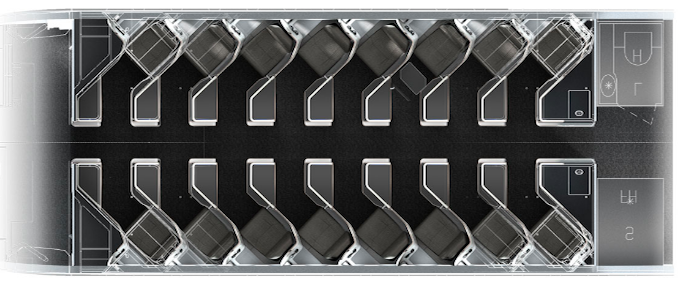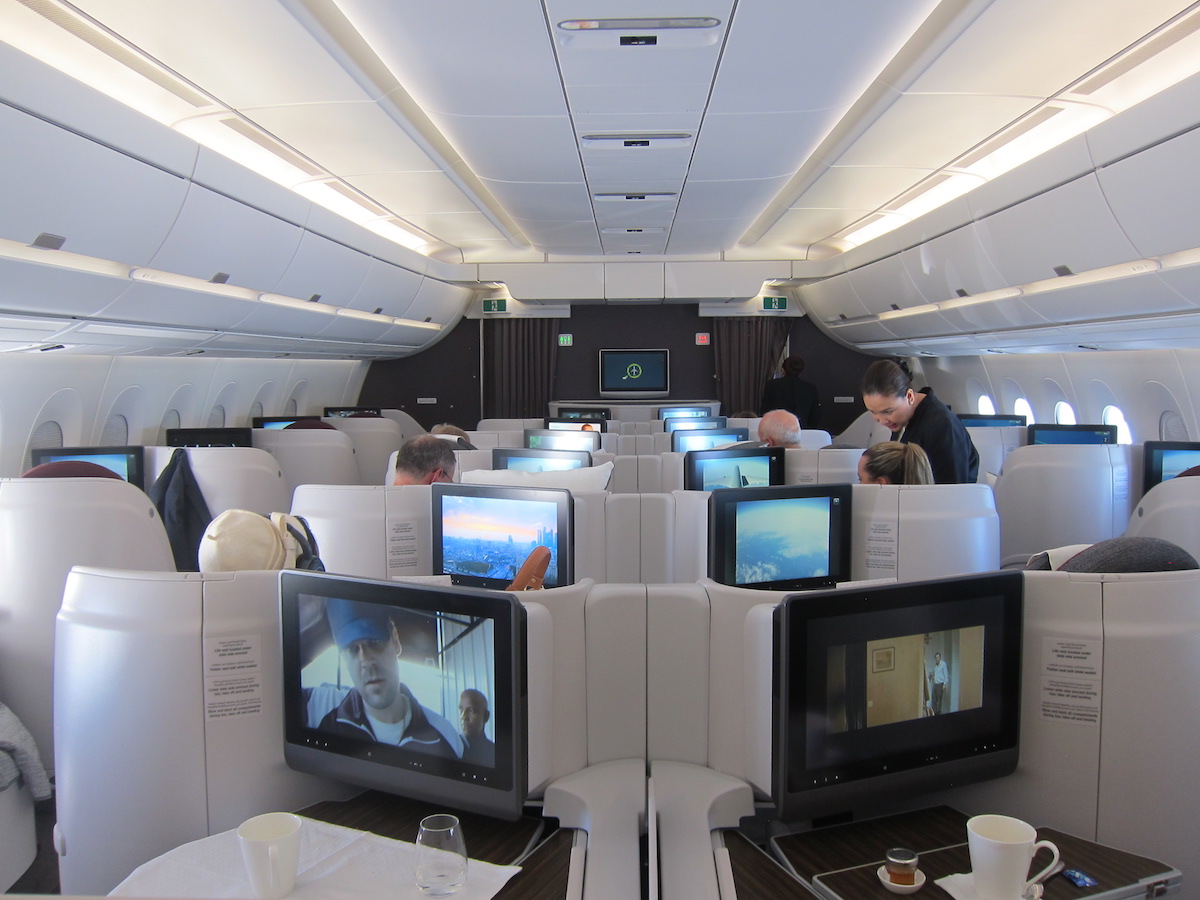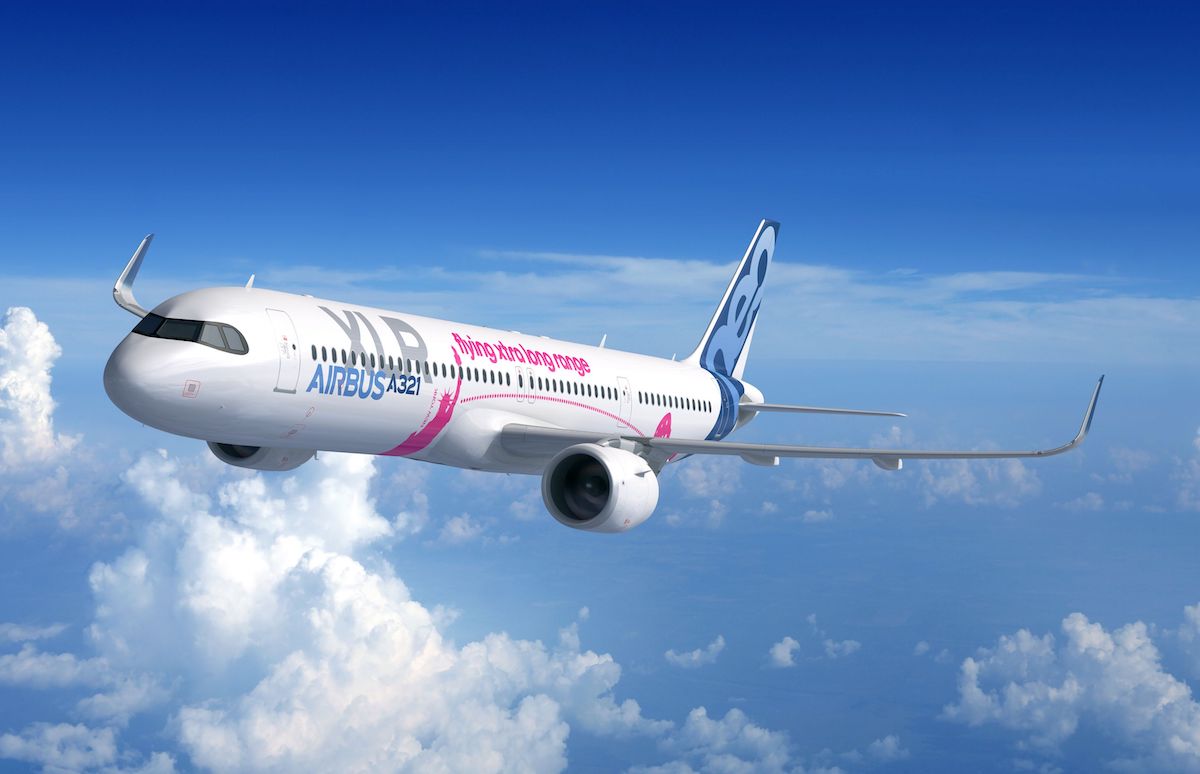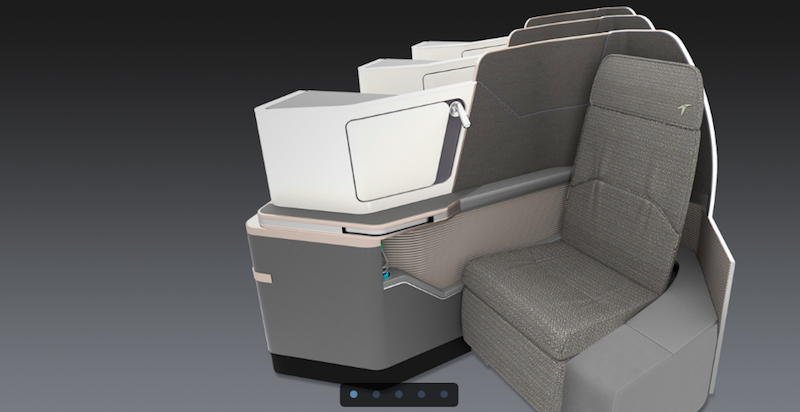I’m sure everyone is tired of hearing about the A321XLR by now, but in this post I wanted to address a big picture concern that many readers have had with the plane.
The A321XLR is no doubt incredibly innovative in terms of the route possibilities it opens up, but should us passengers really be dreading this plane? Here’s my take:
The basics of the A321XLR
Airbus officially launched the A321XLR this week. When it enters production in 2023, it will be the longest range single aisle plane in the world, as it will have the range to fly about 5,400 miles nonstop.
As aircraft technology improves, we’re not only seeing planes become more fuel efficient, but we’re also seeing creative ways that more fuel tanks can be added and maximum takeoff weights can be raised, allowing airlines to operate longer flights without compromising on payload.
As such the concept of long haul flying with narrow body planes isn’t completely new — the Boeing 757 has been operating transatlantic flights for years, and recently even the 737 has operated some transatlantic flights.
However, in all those cases long haul flying with these planes was the exception rather than the norm, while in the case of the A321XLR, it’s exactly what it was built for. Beyond that, the plane can fly further than the 737 or 757.
With a range of 4,700 nautical miles (about 5,400 statute miles), you can expect that many passengers will be spending 10-12 hours on these planes, when you factor in boarding, taxi time, etc.
So let’s take a closer look at what the A321XLR means for passengers, crew members, and more.

Does the A321XLR represent a step back for business class?
We’ve seen a massive amount of innovation the past few years with business class. We’ve gone from angled seats, to fully flat seats, to seats with direct aisle access, to seats with doors.

So will the A321XLR represent a step back for business class? I’d say yes… slightly… in most cases.
To find a happy medium between a great product and something that’s economical, my guess is that most airlines will choose a staggered configuration in business class, where most seats feature direct aisle access, but not all. Think something like JetBlue’s Mint.

I say this because airlines like Aer Lingus and TAP Air Portugal are using the A321LR for transatlantic flights, and that’s basically the configuration they’ve chosen. So in some cases I do think this will represent a slight step backwards for business class. In fairness, for those airlines those are the same seats they have on their wide body planes.
There are also some creative business class products with direct aisle access for narrow bodies. For example, when JetBlue launches Europe flights, it’s highly likely they’ll offer the VantageSolo seat, which is from the same supplier they currently use (Thompson Aero).

These cabins feature direct aisle access from every seat.
Thompson’s VantageSolo seat
Thompson’s VantageSolo seat
Even so, I’d say that’s not as good as some other business class products. It’s essentially the same as a herringbone seat, given that it faces the aisle, and that’s hardly new technology.

So my point is that I do think there’s a slight compromise when it comes to product for business class on narrow bodies, but those are very minor when you consider the A321XLR has the potential to open up new routes.
Obviously every airline is going to make a different decision here, but I do have general concerns about the existence of premium economy on A321XLRs. One of the great innovations we’ve seen in the airline industry the past few years is the introduction of premium economy.

It’s a great middle ground, as economy keeps getting worse and business class keeps getting better.
However, my guess is that while many airlines are installing premium economy on a majority of their wide body planes, many A321XLRs probably won’t feature premium economy. That’s a shame, because it gives passengers fewer options.
Of course I’m generalizing here — I’m sure some airlines will choose a really premium A321XLR configuration, perhaps where half the plane is business class and premium economy, and the rest of the plane is economy.
However, the economics of a premium heavy configuration can be challenging, especially during an economic downturn.

How will economy be on the A321XLR?
The A321XLR should actually be good news for economy, at least as far as the seats specifically go. The Airbus A320 family of aircraft has among the widest seats in economy, as they’re generally 18″ wide.
That’s wider than you’ll find on most planes, including on the 737, 757, 777, 787, etc.
The great thing is that there’s no way they’re going to squeeze in a seventh seat per row in economy. Even on the A350 they’re now considering making a 10th seat in each row standard, so that plane may lose some width.
So from the perspective of comfort in economy, the A321XLR shouldn’t be bad news. Hopefully airlines opt to have personal televisions and wifi on these planes as well, to keep people entertained.

The A321XLR cabin won’t be spacious
The way I view it, the biggest downside to the A321XLR will be the lack of space in the cabin. The seats as such shouldn’t be significantly worse, but there simply will be no space to stretch or walk.
On a wide body plane you can easily walk between aisles to make a “loop,” and there’s also usually less congestion in the aisles, since there are larger galley and exit areas where you can stand and wait for the lavatory.

Unfortunately on narrow body planes you don’t have that ability. In reality if you want to stand you’ll just have to do so in the aisle, and that’s not pleasant for anyone.
So the way I view it, that’s the biggest downside to the plane. If you’re looking to get any movement, the A321XLR is going to disappoint.
The A321XLR cabin pressurization
Planes like the 787 and A350 promise to fight jet lag with how they pressurize the cabin. They claim the pressurization is the same as being at 6,000 feet, compared to other planes, where it’s higher.
It’s my understanding that the A321XLR won’t have those features.
Here’s the thing — I’ve always found that to be marketing hype, and I can’t say that I’ve found I’ve been more well rested having flown a 787 vs. a 777, for example. So I’m not sure I buy into it.
Others swear by it, though. So that is something to be aware of with the A321XLR, and I’d put this squarely in the “your mileage may vary” camp.

Crews will hate the A321XLR
Unless Airbus somehow gets really creative (by somehow installing bunks in the cargo hold), I think the biggest losers with the A321XLR will be crews. They’ll in many cases have 12 hour days where they’re working this plane, and on most modern wide body aircraft they’re used to having private crew rests with fully flat beds.
The A321XLR is not going to be fun for them to work:
- Unless Airbus figures something really creative out, they won’t have proper crew rests, but rather flight attendants may just have some economy seats blocked off (meanwhile I imagine pilots will get one business class seat)
- On bigger planes the galley space is bigger, so crews at least have a bit of privacy during the flight, but I imagine on the A321XLR they’ll constantly be crowded by people
- Navigating a single, long aisle with a cart is gong to be a pain, especially as people want to constantly get up during the meal service
Obviously crews will just have to deal with it, but they won’t like it. It’s one thing to fly an A321XLR once in a while on a 10-12 hour flight, but that pales in comparison to crews having to constantly operate the plane.
The A321XLR could usher in new routes
If the A321XLR is simply being used to increase frequencies on highly trafficked routes, I’d probably avoid it. For example, if I could choose between a 787 and A321XLR between New York and London, I’d go with the former.
On the A321XLR you are giving up some slight comforts across the board, in particular when it comes to the ability to move around the cabin.
But I don’t think that’s the right way to view this plane. The question should be, would you rather fly nonstop on an A321XLR, or connect on a bigger plane?
For example, we could see Aer Lingus launch routes like Dublin to Houston with this plane. Would you fly rather fly nonstop from Houston to Dublin on an A321XLR, or fly from Houston to London on a 747, connect at Heathrow, and then connect to a (very) uncomfortable intra-Europe aircraft?
Personally I think the former sounds better, but to each their own.
Bottom line
My first instincts with the A321XLR are as follows:
- I suspect the A321XLR will represent a slight step backwards in terms of business class, simply because the narrower cabin restricts creative design opportunities
- I do think the A321XLR will lead to a reduction in premium economy, since many airlines will opt for a two class layout rather than a three class layout
- In economy the opportunity is there for the seats to be more comfortable than on wide bodies, since we should expect 18″ of seat width, rather than the 17″ we see on many other planes
The big challenge with the A321XLR will be the lack of cabin spaciousness. On a four or five hour flight that’s not a big deal, but when you’re on a plane for 10-12 hours it’s a different story.
But if that allows you to skip a connection, which saves you time, eliminates the risk of misconnecting, reduces the risk of your bags being lost, and allows you to avoid an uncomfortable regional flight, then maybe it’s a fair trade-off?
I’m curious what you guys think — are you excited by the opportunities the A321XLR opens up, or do you dread the prospect of being on a narrow body plane for over 10 hours?


















